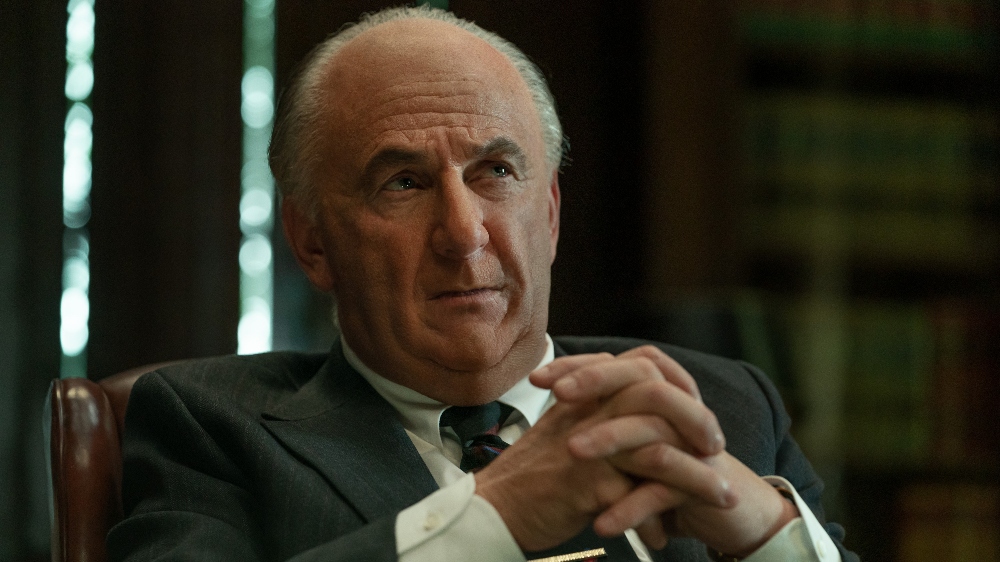
To be gaslit is to be manipulated into questioning your own sanity, and in the new Starz original miniseries Gaslit, White House counsel John Mitchell (Sean Penn) and his outspoken wife Martha (Julia Roberts) find themselves dealing with just that as the Nixon Administration seeks a scapegoat for Watergate. You might say the Mitchells were thrown under the proverbial bus for bugging the Democratic committee’s corporate headquarters even though many others among Nixon’s inner circle were far more culpable.
As Mitchell, Penn gives a tour de force performance, and he’s completely unrecognizable in the role thanks to Prosthetic Makeup Designer Kazu Hiro, a fellow two-time Oscar winner whose career in Hollywood spans 25-plus years. Described by Penn as “virtually a da Vinci” in his artistry, Hiro was Penn’s first and only choice to transform his angular features into the doughy, round face of John Mitchell, and only the actor’s forehead and eyes were left untouched.
Early in his career, Hiro found himself sponsored by Rick Baker, who tapped him to work on Men in Black. Hiro would ultimately hone his craft on many more of Baker’s projects, and in 2018, he finally won an Academy Award for his remarkable work in turning Gary Oldman into Winston Churchill in Darkest Hour. He won a second Oscar just two years later for his work in turning Charlize Theron into Megyn Kelly in Bombshell. Hiro also served as the Aging Makeup Designer for Nicole Kidman in Hemingway and Gellhorn, and Prosthetic Makeup Designer for Angelina Jolie in Salt.
Below The Line spoke with Hiro via Zoom from an undisclosed location where he is currently working on a top-secret project. He talked about the time-consuming, painstaking process of Penn’s stunning transformation and revealed the trial-and-error method of preparing the 11 prosthetics — including a bald plate to a double chin — that were applied like puzzle pieces to the actor’s face and still allowed for organic movement.
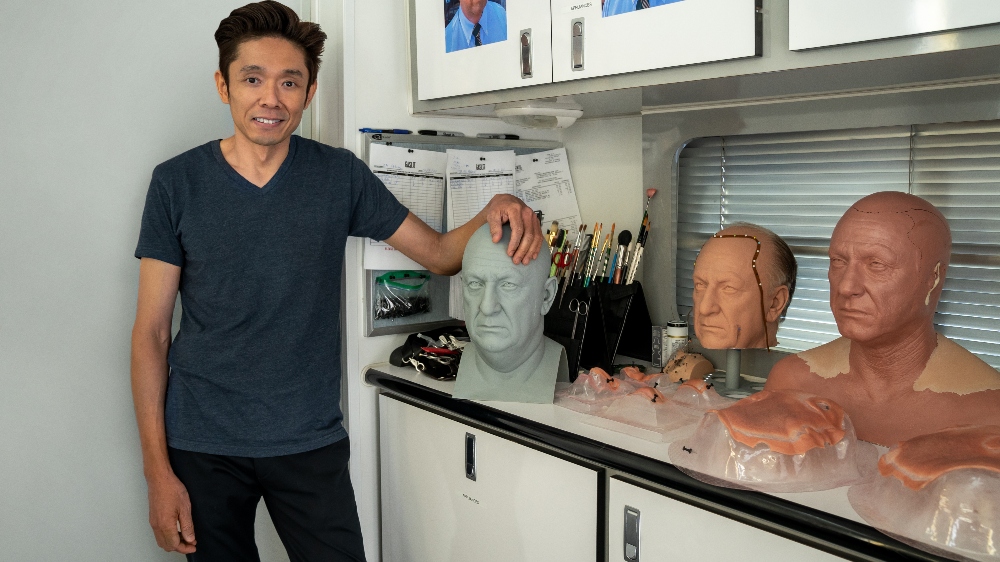
Below The Line: What were your initial conversations with Sean Penn?
Kazu Hiro: Originally, we had been talking to each other for four years. He wanted to meet to work on a project and at that time it didn’t work out because of a schedule conflict. Then I got another message from him that he was doing the John Mitchell role, and he wanted me to work on that. I asked him what he wanted to look like, and he basically said I could do whatever I want because I know what is best.
BTL: You were always Sean’s first choice. How do you know each other?
Hiro: Actually, I never asked him how he found me. Maybe from Charlize [Theron], but I don’t remember if it was before or after Bombshell. I think Sean noticed that I worked with Charlize and contacted me.
BTL: What sort of research did you do with regards to John Mitchell?
Hiro: I got lots of pictures. There wasn’t much video of him out there so I looked for images on the internet. I gathered about 100 or so pictures. He had to be [of] a certain age, but there was one scene where he was younger.
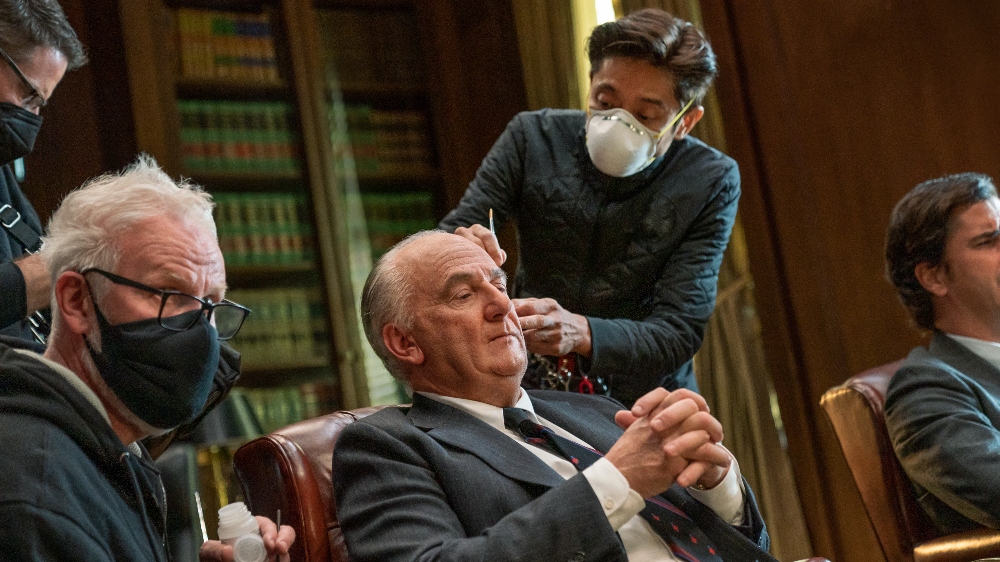
BTL: What was the first step in creating Sean’s facial prosthetics?
Hiro: I did a 3-D scan of his head and made a mold, a duplicate of his head cast in plaster. I compared the photographs with the head cast. That led me to figure out what I should do [and] add to make him look like John Mitchell. With prosthetic makeup, we can only add on him. We can not take out or change anything.
BTL: What did you discover from comparing the photos of John with Sean’s own face and physicality?
Hiro: I found out from comparing them that the profile of the nose was a little bit different, so I could add that and give a weight to the chin shape. Of course, John is bald on top, but Sean didn’t want to shave his hair, so we put on the bald cap and gave him a wig. Also, his shoulder line is quite different. John Mitchell is more hunched, so I gave Sean shoulder pads and we had to give him more weight, so we made him a bodysuit. So there was a shoulder piece and the back-of-the-neck piece, and the top of the head. We painted age spots on his head as well.
BTL: How did you create the character’s double chin and the jowls?
Hiro: There’s a prosthetic from his cheek to the side of his face and coming down to the front of his neck. I built up the weight of his neck. There is a chin piece and a piece for his upper lip and nose, and there were nostrils too.
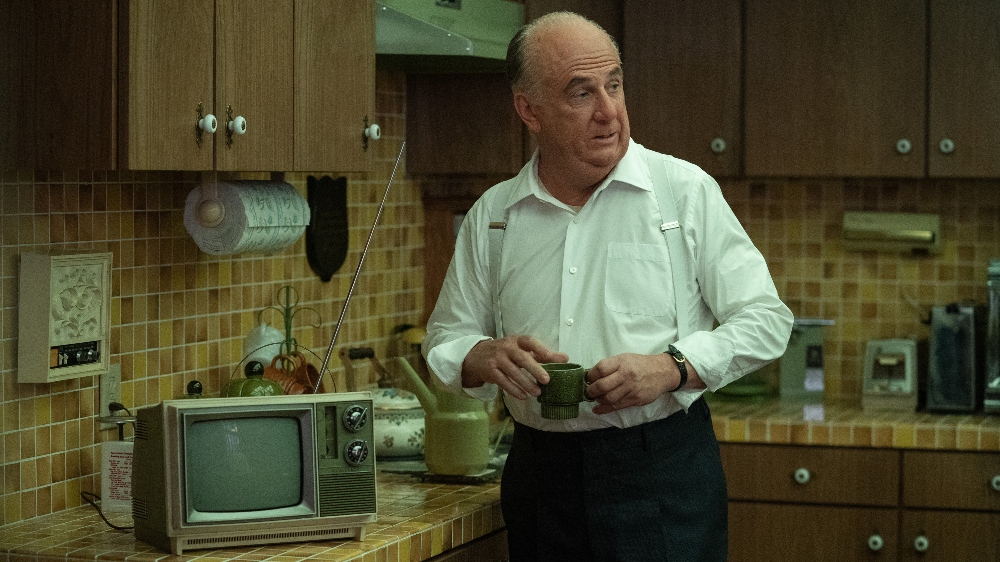
BTL: Why were there so many separate prosthetics?
Hiro: The reason why we had to divide it in so many pieces is to make it quicker to apply on him. After I sculpt it, I cut it into the pieces and made a mold, and then poured silicone in it. If there was one big piece it would be really hard to cast, so we had to cut them into pieces and design each one. We did a test once at my place, and then I noticed some things. I changed the shape of the nose a little bit and the shape of the upper lip a little bit because Sean noticed the profile was different. I quickly changed it and he liked it.
BTL: The forehead and the eyes are still Sean. Did you add any other nuances?
Hiro: Sean has an eyebrow that almost goes up, but John’s eyebrow went down. So we added a small hairpiece on the outside corner of his eyebrows and that kind of changed the look a lot.
BTL: What are the materials that you used to create the prosthetic?
Hiro: It’s a platinum-cured silicone, like medical silicone. It’s the same kind they use to make a prosthetic, but we make it a lot softer. A medical prosthetic has to last a long time, but a movie prosthetic is only applied once and will be removed and thrown away. We can make it really soft because after we remove it, it will be trashed, but the important part is it has to move with the actor’s face.
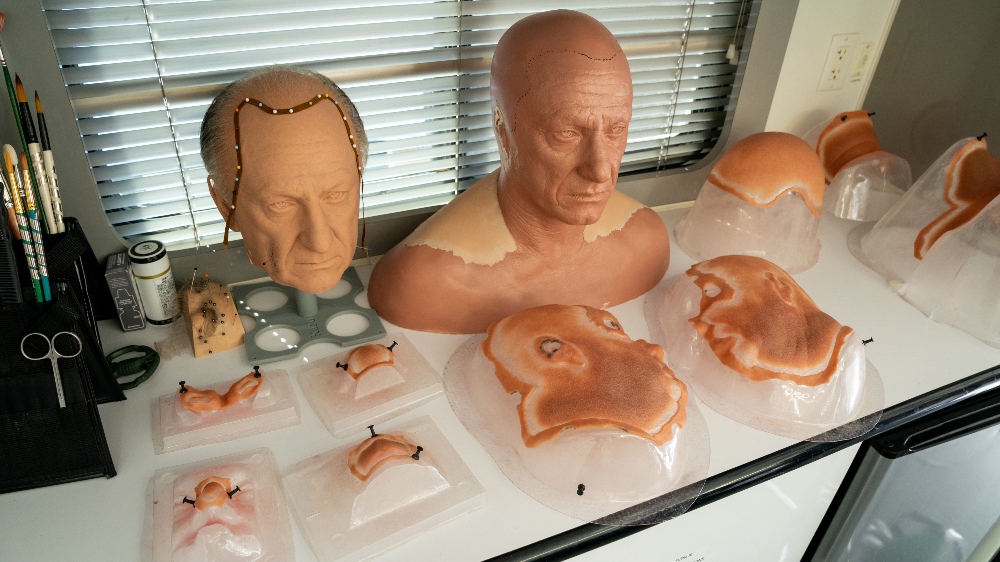
BTL: Can you describe how you designed the pieces to move with Sean’s facial expressions?
Hiro: Softness is important and also understanding the anatomy of the face and how the prosthetic will behave on the actor’s face. We have to know the balance of the thickness when transferred to the surface. For instance, when someone smiles, a dimple happens, so we have to control the thickness of that area so that will still happen on the actor’s face. It happens on the prosthetic surface when the actor smiles. We also have to know where to blend on the face because if the blending happened in the active area when actors smile, it will show up. So sometimes we blend above that area or go over it.
BTL: Did you have to videotape Sean saying the dialogue so you would know how his face moved?
Hiro: I see him in the movies, and when he came to my place to make the 3-D scan, I took pictures of him with different expressions. The good thing with a scan [is], with people of a certain age, it will show their indentations or wrinkles of their expressions on their face. That will show me where his expressions happen.
BTL: What were some of the changes as far as designing the prosthetic for the younger John Mitchell?
Hiro: At the beginning of the production, we had a discussion about how to deal with that because of the schedule, and [because] it was just only one scene. They were already going to use CG to diffuse the wrinkles and make it smooth in post. We painted his skin tone to look a little more healthy and made the wig darker. We also painted his lips thicker.
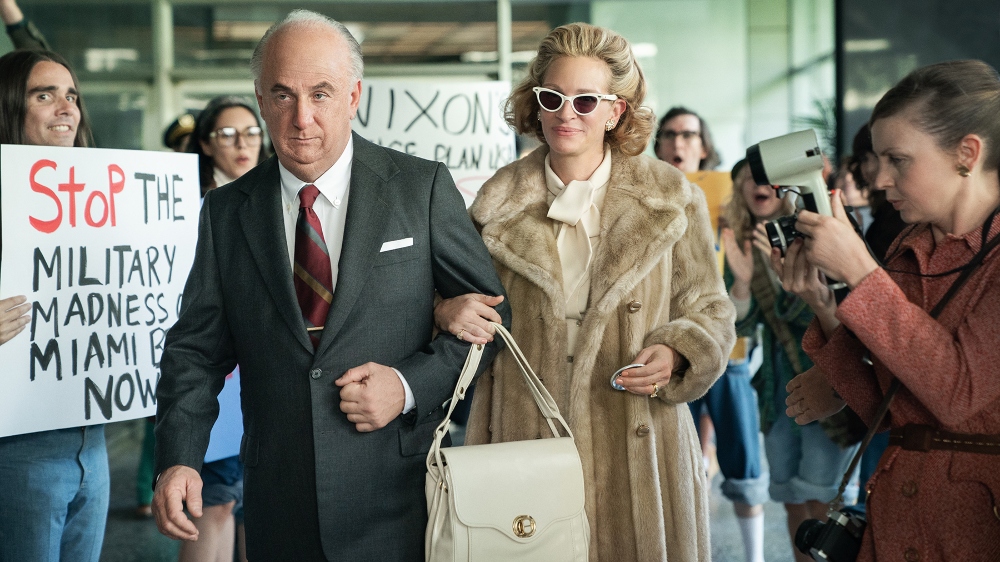
BTL: Who did the actual application of the prosthetics?
Hiro: In the beginning, until we had a vaccination break (Prosthetic Makeup Artist) Richard Redlefsen was applying it, and it takes two people. After the break, we had (Special Makeup Effects Artist) Chris Nelson and another person apply [it]. It always had to be two makeup artists. It was quite tricky because the positioning of the pieces is really important, because if it’s off, it doesn’t work. I’m usually on set at least a week to make sure that everything is working, and tell them where the pieces should be and how to take care of the wig.
BTL: Where are all the prosthetic pieces now?
Hiro: I have leftover prosthetics [laughs] because each set is quite expensive, so we usually try not to make too many. We have two backup sets, but I have the original in my studio. I have all the head casts of the actors. There are lots of heads in my home, including Sean. He has a really great face, an amazing face.
BTL: What did you think of when you saw the final outcome of your work on screen?
Hiro: What comes back is a kind of feeling from Sean. He was a genuinely nice person and that fond memory comes back. He’s a big actor, and he had a lot of stories and a reputation, and I was expecting him to be that way in person. But every day seeing him, he was such a great person. I always criticize my work really hard. Every time I do something, I pick out what’s wrong with it, even if I cannot change it. What’s most rewarding is when I see the actor is happy. What I remember when we did the first test was Sean was FaceTiming with many people to show them what he looked like, so that meant he was happy.
Gaslit is currently streaming on Starz, with its finale set for June 5.
https://www.youtube.com/watch?v=ZQ-uyTbsWJw





